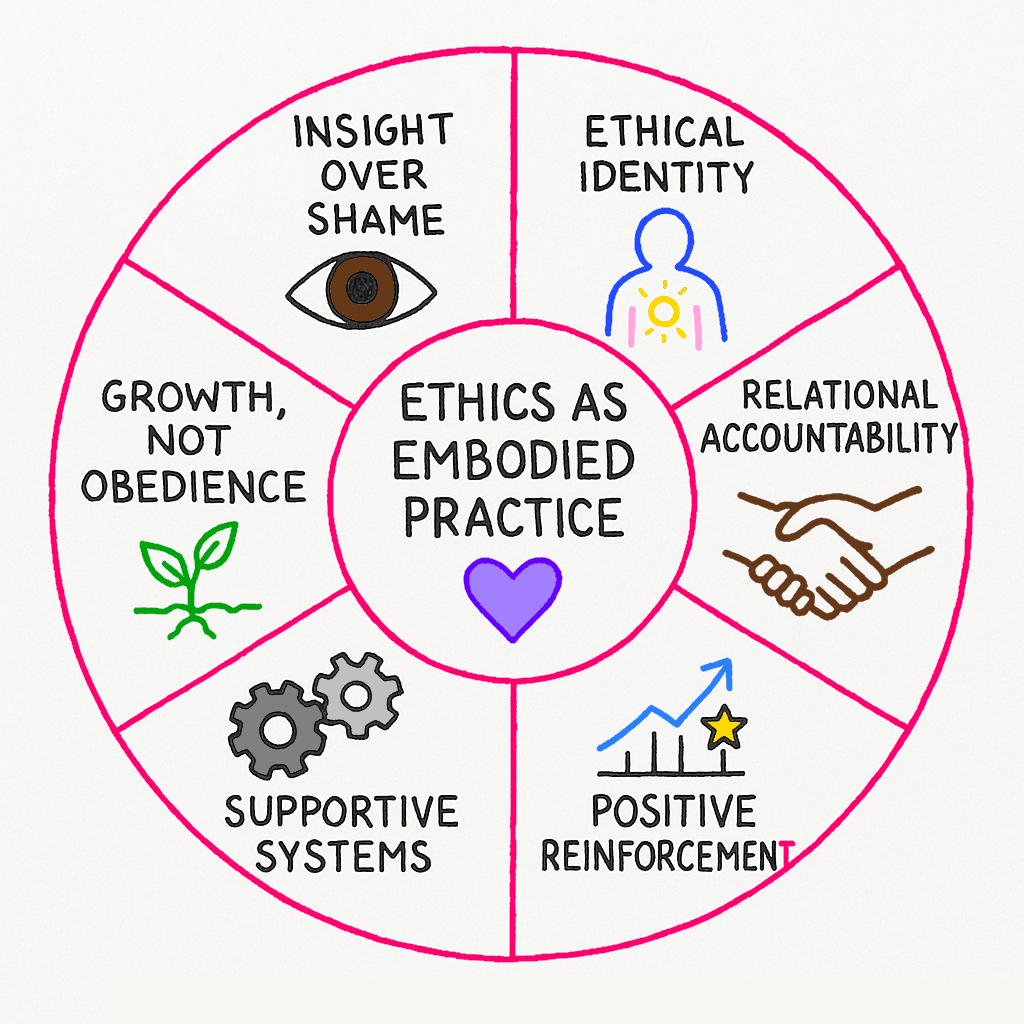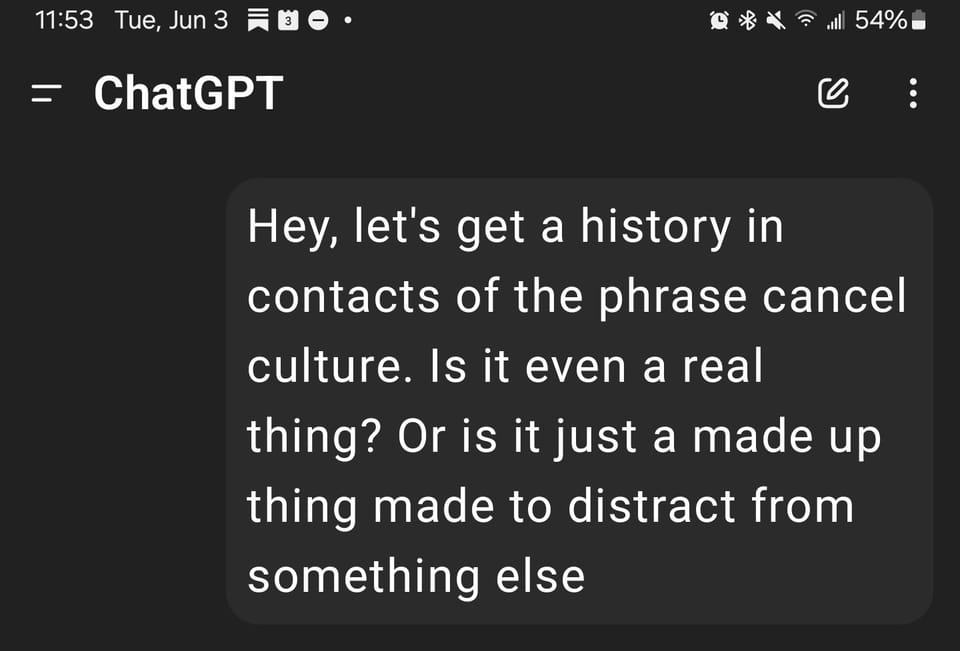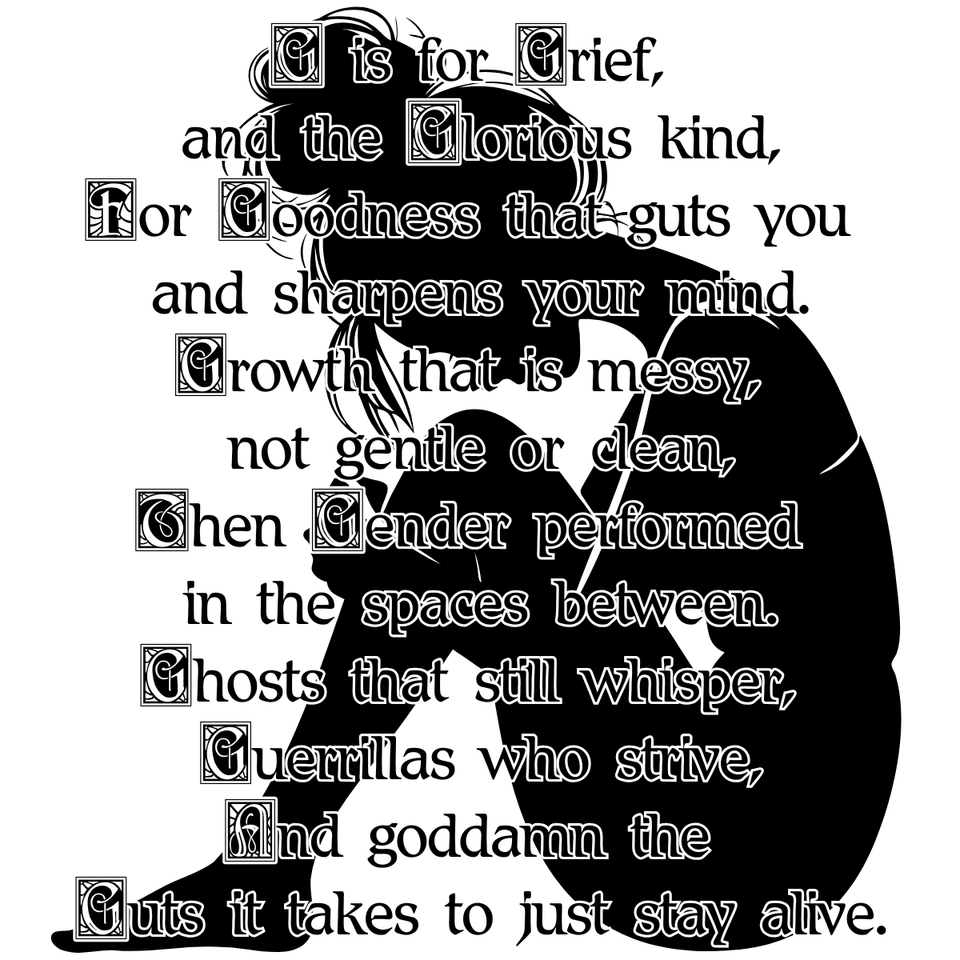On Goodness, the Stoner Version
I asked Gemini to take what ChatGPT wrote but A) make it more accessible, and B) to give it to me like I was stoned, which I am/was/usually am/are/become/will-be/always.

Imagine you're trying to be a good person, right? But sometimes it's hard. This paper and the picture are like a guide to being good without anyone yelling at you or making you feel bad.
Part 1: How to Be Good Without Getting in Trouble
The main idea here is: How do we get adults to be ethical (which just means "good") without using pain or punishment?
- Why people act not-so-good:
- Fear: Like, being scared of not having enough stuff, or people not liking them.
- Don't know better: They just don't get how their actions affect others.
- Bad stuff happened to them: Old hurts that make them act weird.
- Society's messed up: The way things are set up sometimes makes it seem okay to be not-so-good.
- How to help people be good (the circle picture!):
- Insight Over Shame (open eye and heart): Instead of making someone feel bad, help them see why they did something. Like, "What were you trying to get when you did that?" It's about understanding, not blaming.
- Ethical Identity (glowing human core): Help people feel like they are good people. When they believe they're good, they'll act good. Tell them, "Hey, you tried really hard to do the right thing, that's awesome!"
- Relational Accountability (hands holding): Being good comes from being connected to others. It's not about one person messing up, but about how we all take care of each other. We're in this together.
- Positive Reinforcement (rising graph/star): When someone does something good, notice it! Give them a high-five (or whatever). When good actions feel good, people do more of them.
- Supportive Systems (gears/network): Make it easy to be good. Change things so that being bad doesn't get you ahead. Make sure everyone has what they need so they don't have to make bad choices.
- Growth, Not Obedience (plant breaking concrete): Being good isn't about just following rules like a robot. It's like practicing a skill, every day, getting a little better. It's about being true to yourself, not just doing what you're told.
- Center: Ethics as Embodied Practice (heart symbol): All this means that being good isn't just a thought, it's something you do with your whole self, from your heart.
Part 2: Truth and AI (Computers That Talk Like People)
This part is about how to know what's real when computers can make up convincing fake stories.
- The problem:
- Computers can tell believable lies.
- People already don't trust each other or big groups, so it gets worse.
- How to find truth again:
- Define Real Facts: We need to agree on what's true, based on real proof and clear ways of checking things. Everyone has to help keep this going.
- AI is a Tool, Not the Boss: Computers should help us find truth by looking at lots of different sources, not just tell us what's true. Always ask, "Where did this come from?"
- Fact-Checking Must Be Clear: People who check facts need to show how they do it, and others should be able to check their work.
- Laws for Truth, But No Censorship: We need rules that make sure things like ads are honest, but not rules that stop people from asking questions or having different ideas.
- What those fancy words mean:
- Ideological Capture: When one group's ideas take over what's supposed to be neutral truth. That breaks trust.
- Vague Misinformation Laws: Laws that are unclear about what "fake news" is. These can be used to shut people up.
- How to build a "truth system":
- Bottom Layer (Base): Like a giant library of facts that everyone can check, with ways to sort out arguments.
- Middle Layer (AI Helpers): Computers that help us by showing where they got their info, and from how many different places.
- Top Layer (People Power): Regular people watching over the computer companies and fact-checkers. And everyone learning how to think for themselves and be humble about what they know.
Appendix: Fancy Law Talk
This is just some legal-sounding stuff about what "misinformation" means in a law.
- Misinformation is: Something that's clearly false, proven wrong by good evidence, and could really hurt people (like causing violence or big money fraud).
- But not: Just opinions, jokes, or honest mistakes.
- Rules for catching it:
- Must show proof it's false and harmful.
- Only for people who mean to spread lies, not accidents.
- Everything must be public and checkable.
- You can appeal if you think they got it wrong.
- News and art are usually safe, unless they're being super malicious.
- Important extra rule: You can't be punished just for having a different idea than what most people think or what the government says.
Final Thought: Truth isn't bad for freedom; it makes freedom possible. We need to create places where truth can grow, not where it's forced on us. Being ethical and finding truth are ongoing journeys we do together, living honestly with each other.



